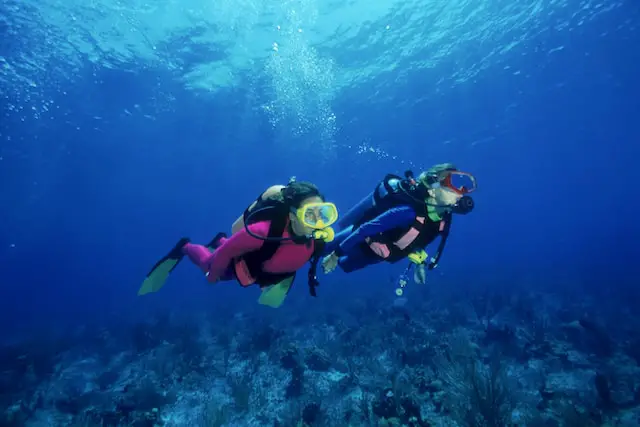The thrill of wet suit diving into a world unseen by many is a passion that unites all divers. With the advancement of diving equipment over the years, more dive sites are becoming accessible to adventurous souls. A key innovation driving this trend is the wet suit, a highly specialized diving garment designed to protect divers in warm water conditions. The wet suit has opened up the opportunity for exploring cold water sites like the storied depths of Lake Superior. In this article, we delve into the advantages and challenges of wet suit diving, with a particular focus on these chilly, deep waters.
The Magic of the Wet Suit

The wetsuits packages are a marvel of design and material science. Unlike its cousin, the dry suit, which is designed to keep a diver completely dry, a wet suit allows a small amount of water to seep in. This water is then warmed by the diver’s body heat, creating a thermal buffer between the diver and the surrounding colder water. The most common material for these suits is neoprene, a type of synthetic rubber that offers excellent insulation due to its closed-cell structure trapping heat-retaining air bubbles.
The use of a wet suit offers several advantages. Firstly, it provides substantial thermal protection, which is especially critical when diving in cold water environments. It allows divers to withstand the chill of the water for extended periods, hence prolonging dive times and enhancing the overall diving experience.
Secondly, wet suits extend the diving season. With the thermal protection they offer, divers are not limited to diving in warm summer months. This allows for year-round diving opportunities, including in locations like Lake Superior, known for its remarkably cold waters, even during the peak of summer.
Finally, wet suits offer protection from cuts and stings. The underwater world, while beautiful, can be filled with sharp rocks, abrasive sand, and stinging marine life. The wet suit provides a layer of armor, protecting the diver from these potential hazards.
Navigating Challenges
However, as with any piece of equipment, there are challenges associated with using a wet suit.
One significant hurdle is mastering buoyancy control. The neoprene material in wet suits compresses at depth, altering its buoyancy characteristics. This means divers have to adjust their buoyancy control devices more frequently than they would with a dry suit, making dives a bit more complex.
Furthermore, wet suits demand specific maintenance to maximize their lifespan. They need to be rinsed thoroughly after each use to remove salt, sand, and other potentially damaging residues. Additionally, storing a wet suit correctly is crucial. They should be hung up in a cool, dry place away from direct sunlight, which can degrade the neoprene over time.
Diving into Lake Superior
With its frigid waters, Lake Superior presents a unique challenge even for the most experienced divers. The lake, home to numerous historical shipwrecks and a variety of unique freshwater marine life, is a dream for many divers. With water temperatures rarely exceeding 40 degrees Fahrenheit even during the height of summer, it is a location that is virtually impossible to dive without a wet suit.
However, braving the cold opens up the opportunity to explore sites like the famous shipwrecks or the underwater caves near the Apostle Islands. Such dives offer experiences and sights that are utterly unique, making the use of a wet suit not just a challenge, but an opportunity to witness some of the most awe-inspiring underwater landscapes that North America has to offer.
Video: Diving into Lake Superior! (With a wetsuit)
Final Thoughts About Wet Suit Diving
Wet-suit diving, while presenting unique challenges, offers divers the chance to expand their horizons and explore cold water sites. The combination of thermal protection, extended diving seasons, and protection from environmental hazards makes it an essential part of any diver’s gear. With proper training, maintenance, and respect for the cold, diving into the depths of Lake Superior or any other cold-water site becomes not just a possibility but a thrilling adventure waiting to unfold.
Through the lens of a wet suit, the underwater world becomes a place of endless discovery, regardless of the season or temperature.



